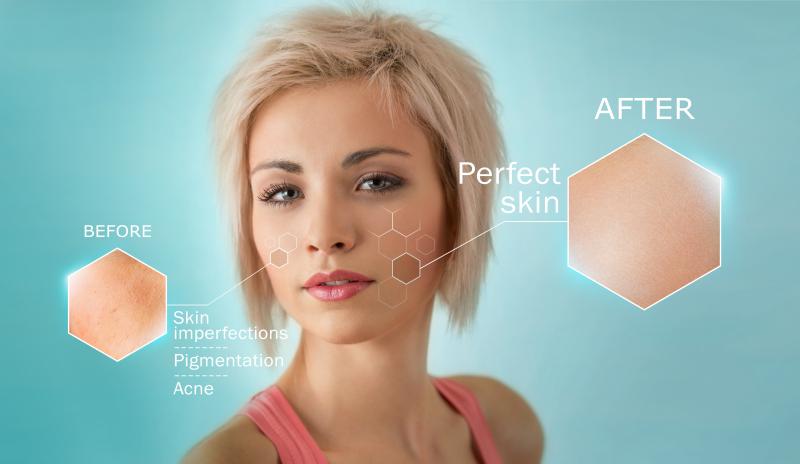Peels

Chemical peels can improve the skin’s appearance. In this treatment, a chemical solution is applied to the skin, which makes it “blister” and eventually peel off. The new skin is usually smoother and less wrinkled than the old skin.
Chemical peels can be done on the face, neck, or hands. They can be used to:
- Reduce fine lines under the eyes and around the mouth
- Treat wrinkles caused by sun damage and aging
- Improve the appearance of mild scars
- Treat certain types of acne
- Reduce age spots, freckles, and dark patches (melasma) due to pregnancy or taking birth control pills
- Improve the look and feel of skin
Areas of sun damage may improve after chemical peeling.
After a chemical peel, skin is temporarily more sensitive to the sun, so wear sunscreen every day. It should say “broad-spectrum” on the label, meaning it protects against the sun’s UVA and UVB rays. Limit your time in the sun, especially between the hours of 10 a.m. and 2 p.m., and wear a wide-brimmed hat.
Who Is a Good Candidate For a Chemical Peel?
Generally, fair-skinned and light-haired patients are better candidates for chemical peels. If you have darker skin, you may also have good results, depending upon the type of problem being treated. But you also may be more likely to have an uneven skin tone after the procedure.
Skin sags, bulges, and more severe wrinkles do not respond well to chemical peels. They may need other kinds of cosmetic surgical procedures, such as laser resurfacing, a facelift, brow lift, eyelid lift, or soft tissue filler. These procedures are beyond the scope of service at Skin Ambitions, and we would recommend visiting a plastic surgeon for such services.
Before You Get a Chemical Peel
Tell us if you have any history of scarring, cold sores that keep coming back, or facial X-rays.
Before you get a chemical peel, we may ask you to prepare your skin by using other medications, such as Retin-A.
We will work with yiou to determine the approprite depth of your peel. This decision depends upon the condition of your skin and your goals for treatment.
How Chemical Peels Are Done
Peels are an outpatient procedure, meaning there’s no overnight stay.
What To Expect After the Chemical Peel
Depending upon the type of chemical peel, a reaction similar to sunburn occurs following the procedure. Peeling usually involves redness followed by scaling that ends within three to seven days. Mild peels may be repeated at one to four-week intervals until you get the look you’re after.
Medium-depth and deep peeling may result in swelling as well as blisters that may break, crust, turn brown, and peel off over a period of seven to 14 days. Medium-depth peels may be repeated in six to 12 months, if necessary.
You’ll need to avoid the sun for several months after a chemical peel since your new skin will be fragile.
Possible Complications
Some skin types are more likely to develop a temporary or permanent color change in the skin after a chemical peel. Taking birth control pills, subsequent pregnancy, or a family history of brownish discoloration on the face may make that more likely.
There is a low risk of scarring in certain areas of the face. Some people may be more likely to scar. If scarring does happen, it can usually be treated with good results.
For people with a history of herpes outbreaks, there is a small risk of reactivating cold sores. There are prescription medications to prevent or treat that.
If you are interested in a chemical peel, please call to schedule a free consultation where we can determine the most appropriate treatment options.